

17 11 21 25 The New World Of Work: Home, Hybrid Or Office? - Srikantan Moorthy, Infosys Is The HR Tech Landscape Evolving? - Sudhakar Raja, TRST Score How To Foster A People-Centered Workplace Culture - Jeff Pamplin and Akshay Thakurdesai, Apex Group New Year, New Talent Gap In IT - Anuj Agrawal, Zyoin JANUARY 2023 • Vol.5 • No. 01 (ISSN 2564-2049) UndERsTandInG THE aTTRITIOn FaCTORs and HOW IndIa InC. Can COUnTER THEm - Sayeed Anjum, Co-Founder and CTO, Greytip Software Pvt. Ltd.
23
Understanding The attrition Factors and How India
With WFH allowing employees to pursue more than one job opportunity, it will take a concerted effort to engage the workforce and prevent a talent recession

- Sayeed Anjum, Co-Founder and CTO, Greytip Software Pvt. Ltd.
27
Not all quittings are due to monetary reasons
- Lakshmi Mittra, SVP and Head, Clover Academy
Heeding the lessons of the Covid-19 pandemic for organizational survivability
- Murad Salman Mirza, Organizational Development and Talent Management Expert
34
Automating employee onboarding to tracking employee performance
- Amit Shingala, Co-Founder & CEO, Motadata

07
I nd EX HCM Excellence (APAC & Middle East)
2023 Vol.05 No.01 (ISSN 2564-2049)
On the Cover
JANUARY
Inc.
Them
Can Counter
Articles
5 Innovative Ways To Retain Quality
Talent
Leveraging An Altruistic Mindset As A Competitive
For Corporate
Advantage
Leaders
How To Streamline HR Operations With
Smart Automation
09 Toxic Bosses And Their Success How to build a positive workplace culture - Uzair Hassan, CEO, 3H Solutions Group 14 “Talent Market Is In A State Of Flux” Exclusive interview with Saumya Khare, Senior Director-Human Capital, Moglix 19 Beyond Awareness: Embedding DEI In Talent Process Learn how to use positive discrimination or positive action - Pothen Jacob, Partner and Principal Consultant, Interweave Consulting Straight Talk with HR.com
TOP PICKS
The New World Of Work: Home, Hybrid Or Office?
Here’s what organizations should consider
- Srikantan Moorthy, EVP, Head - US Delivery Operations and Global Head, Education, Training & Assessments, Infosys
New Year, New Talent Gap In IT

Challenges and way forward in the recruitment process
- Anuj Agrawal, Founder and CEO, Zyoin
Is The HR Tech Landscape Evolving?
What to look for in 2023
- Sudhakar Raja, Founder and CEO, TRST Score
How To Foster A People-Centered Workplace Culture

Operational and HR collaboration are key

- Jeff Pamplin, Global Head, Operations, and Akshay Thakurdesai, Country Head, India, Apex Group

INDEX 11 17 21 25
How are our HCm Products and services helping to make you smarter?
HCm Excellence (aPaC & middle East) - Bi-monthly Interactive Learning Journal

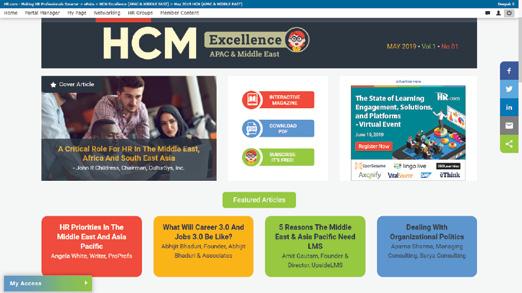
Stay up to date on labor laws and compliant on HCM regulations in the Asia Pacific (APAC) and Middle East regions. This bimonthly publication offers relevant topics that help educate and inform readers on the latest HR developments, regulations, or practices in these areas that may affect your business.
Human Capital management Webcasts for Certification Credit

HR.com offers various informative webcasts on a variety of topics around human capital management. Webcasts are available live online with a downloadable podcast and a copy of the slides (PDF) available before and after each webcast. Earn all of the required recertification credits for aPHR, PHR, SPHR, GPHR, and SHRM Certifications. HR.com’s one-hour webcasts, excluding demo webcasts, in every HR specialty are pre-approved for HRCI and SHRM credit.

HR Community networking
Join our community members with a similar interest in your specialty of HR. Share content and download research reports, blogs, and articles, network, and “follow” peers and have them “follow” you in a social network platform to communicate regularly and stay on top of the latest updates. These well-established communities are an invaluable resource for any HR professional or manager.
Use these invaluable HCM Excellence (APAC & Middle East) resources today! For more information phone: 1.877.472.6648 | email: sales@hr.com | www.hr.com
Driving and inspiring HR Excellence in the Asia Pacific and the Middle East regions.
Editorial Purpose
Our mission is to promote personal and professional development based on constructive values, sound ethics, and timeless principles.
Excellence Publications
Debbie McGrath CEO, HR.com - Publisher
Sue Kelley Director (Product, Marketing, and Research)
Babitha Balakrishnan and Deepa Damodaran Excellence Publications Managers and Editors
Deepak S Senior - Design and Layout
HCM Excellence (APAC & Middle East) Team
Babitha Balakrishnan and Deepa Damodaran Editors
Chinnavel and Nataraj Ramesh Design and Layout (Digital Magazine)
Chandra Shekar and Vibha Kini Magazine (Online Version)
Submissions & Correspondence
Please send any correspondence, articles, letters to the editor, and requests to reprint, republish, or excerpt articles to ePubEditors@hr.com
For customer service, or information on products and services, call 1-877-472-6648
HCM Excellence (APAC & Middle East) Excellence (ISSN 2564-2049)
is published monthly by HR.com Limited, 56 Malone Road, Jacksons Point, Ontario L0E 1L0
Website Address: www.hr.com
debbie mcgrath Publisher, HR.com
Babitha Balakrishnan | deepa damodaran Editors, HCM Excellence (APAC & Middle East)



The Future of Work in 2023 and Beyond
Theworld of work has changed dramatically in the past three years and the ongoing disruptions hint that 2023 will bring in even more significant changes to the workplace.
As we enter a new year, new approaches to work, a potentially looming recession, the changing demands of the workforce, and technological adoptions, among others will drive continued changes to the most prevalent workplace trends.
With employees now prioritizing work-life balance, workplace flexibility is another aspect that has become more of a permanent trend. Employees are clearly not looking for workplaces as spaces where they can spend 8-9 hours daily. They are evaluating the value their job is adding to their lives.
Experts also predict an obvious growth in gig workers. Gig employees will overtake the permanent staff thus changing the landscape of talent acquisition. From a greater adoption of AI to the emergence of the metaverse, these tech advancements will also make their way to the workplace in 2023.
Ever since the Covid-19 pandemic disrupted the normal way of office life and introduced the concept of work from home (WFH), an increasing number of employees are seeking additional employment opportunities, even while continuing in their previous jobs. Greytip Software’s Sayeed Anjum, in his article, Understanding The Attrition Factors And How India Inc. Can Counter Them, discusses why it will take a concerted effort to engage the workforce and prevent a talent recession.
Although, globally, businesses acknowledge the reality of the new world of hybrid work,
the opinion is still divided, as a significant number believe in-office work is best for business. Infosys’ Srikantan Moorthy, in his article, The New World Of Work: Home, Hybrid Or Office?, shares what organizations should consider before choosing their work models.
APEX Group’s Jeff Pamplin and Akshay Thakurdesai in their article, How To Foster A People-Centered Workplace Culture, share insights and advice on overcoming HR challenges and seizing opportunities to scale up an international business in India.
Also included is an exclusive interview with Saumya Khare, Senior Director-Human Capital, Moglix, where she talks about the biggest challenges when it comes to talent management in the future, how employers should pave the way for better talent retention, and more.
The workforce of 2023 will continue to evolve and organizations will have to adapt to the new workplace reality to stay competitive. Employees will have more say on how they want to structure their careers and the kind of culture they want to work in. Organizations looking to stay ahead of the curve should start addressing the new workplace trends and implementing them into their business model today.
We hope you enjoy reading all the informative articles in this edition and get back to us with your valuable feedback!
Happy Reading!
Disclaimer: The views, information, or opinions expressed in the Excellence ePublications are solely those of the authors and do not necessarily represent those of HR.com and its employees. Under no circumstances shall HR.com or its partners or affiliates be responsible or liable for any indirect or incidental damages arising out of these opinions and content. EdITOR’s nOTE
OR For Advertising Opportunities, email: sales@hr.com Copyright © 2023 HR.com. No part of this publication may be reproduced or transmitted in any form without written permission from the
must be credited.
publisher. Quotations
Subscribe now for $99 / year And get this magazine delivered to your inbox every month Become a Member Today to get it FREE! SIGN UP Write to the Editor at ePubEditors@hr.com
In a world of unparalleled challenges (global pandemic, racial injustice, political rivalry, digital 4.0, emotional malaise), uncertainty reigns. Finding opportunity in this context requires harnessing uncertainty and harnessing starts with reliable, valid, timely, and useful information. The Excellence publications are a superb source of such information. The authors provide insights with impact that will guide thought and action.

Excellence publications are my ‘go-to’ resource for contemporary and actionable information to improve leadership, engagement, results, and retention. Each edition offers rich and diverse perspectives for improving the employee experience and the workplace in general.





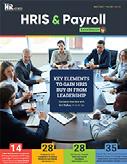
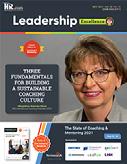
I regularly read and contribute to Leadership Excellence and Talent Management Excellence. I use many of the articles I read to augment my own presentations and I often share the articles with my clients. They are always quick, right on target for the latest issues in my field, and appreciated by my clients. If you want to stay up to date on the latest HR trends, choose a few of the different issues from the Excellence series of publications.

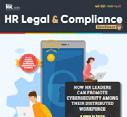



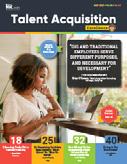

 Dave Ulrich
Rensis Likert Professor, Ross School of Business, University of Michigan Partner, The RBL Group
Julie Winkle Giulioni Author, Virtual /Live Keynote Presenter, Inc.’s Top 100 Leadership Speakers
Dr. Beverly Kaye CEO, BevKaye&Co.
Dave Ulrich
Rensis Likert Professor, Ross School of Business, University of Michigan Partner, The RBL Group
Julie Winkle Giulioni Author, Virtual /Live Keynote Presenter, Inc.’s Top 100 Leadership Speakers
Dr. Beverly Kaye CEO, BevKaye&Co.
WHY EXCELLENCE PUBLICATIONS?
We’re eager to hear your feedback on our magazines. Let us know your thoughts at ePubEditors@hr.com
Understanding The attrition Factors And How India Inc. Can Counter Them
By Sayeed Anjum, Greytip Software Pvt. Ltd.
Eversince the Covid-19 pandemic disrupted the normal way of office life and introduced the concept of work from home (WFH), an increasing number of employees are seeking additional employment opportunities, even while continuing in their previous jobs.
The recent news from top Indian IT firms indicates the gravity of the problem, with many companies resorting to strict action against those who are engaged in moonlighting. However, despite the Factories Act 1948 u/s 60, preventing factory workers from maintaining dual employment, white-collared staff do not fall under its ambit.

Submit Your Articles HCM Excellence (APAC & Middle East) presented by HR.com January 2023 7
COVER aRTICLE
With WFH allowing employees to pursue more than one job opportunity, it will take a concerted effort to engage the workforce and prevent a talent recession
But they are governed by the exclusive terms of employment at their respective workplaces. This warrants a deeper understanding of the factors responsible for such employee behavior and what organizations can do to reverse this dangerous trend emerging in corporate India.
Leading Causes of the Great Resignation
While the prospect of earning additional income is always tantalizing, often the key reason for employees resigning from great job roles, quiet quitting, or even moonlighting comes down to their level of engagement within their organizations. In some cases, it could merely be the hunger to take up more challenging projects during off-working hours, and experts also point to the increasing tendency of GenZ workers to engage in a side hustle. Whatever the reason, the trend is here to stay and hints at how the future of work could increasingly rely on the gig economy.
steps HR Leaders Ought to Take to stem the Talent Outflow
Firms like those engaged in IT, pharma and other researchintensive sectors have come down hard on employees engaged in moonlighting. Others like food delivery apps and fintech firms have opted to allow their employees a degree of freedom in pursuing additional projects, as long as it does not impact their contributions during normal working hours. This is indicative of the refined approach that
different companies need to take for addressing the typical hierarchy of needs that employees have.
HR leaders should go back to basics and encourage a culture of inclusivity, recognize and reward workers for their contributions, and encourage them to take up other challenging opportunities within the organization rather than peering outwards.
Challenges in sourcing and Ways to Address Them
With the increasing use of technology in our daily lives, HR recruitment needs to be strengthened with data-driven decision-making rather than the traditional subjective approach. The use of artificial intelligence (AI)-based evaluation engines, virtual candidate evaluations and social media-based recruitment drives are some of the latest trends that recruiters need to embrace in their search for the right talent.
Considering the rising rate of attrition that is now becoming commonplace, HR leaders will have to ensure that they can hire right, hire fast and bring newly inducted talent up to speed with the organization’s vision without having the traditionally long turnaround times.
The Role of HR Technology in driving Positive Change

As technology replaces many repetitive tasks and makes current organizational structures
obsolete, HR leaders will have to proactively embrace them and overhaul their operations before it is too late.
Apart from using AI and machine learning (ML) to automate business and hiring processes, the use of distributed ledger technologies (DLTs) like blockchain will undoubtedly transform the way humans interact with each other and conduct business in the near future. Ensuring that the organization incorporates these technologies at the workplace will be essential to attracting and retaining the best talent, providing them ample opportunities to upskill themselves while at the workplace.
Not only would this reduce the propensity of employees to switch to different organizations on a regular basis, but will also promote innovation at the workplace and lead to more business success in the long term.
Would you like to comment?
Submit Your Articles HCM Excellence (APAC & Middle East) presented by HR.com January 2023 8 Understanding The Attrition Factors And How India Inc. Can Counter Them
Sayeed Anjum is the Co-Founder and CTO of Greytip Software Pvt. Ltd.
Toxic Bosses And Their success
How to build a positive workplace culture
 By Uzair Hassan, 3H Solutions Group
By Uzair Hassan, 3H Solutions Group
Unfortunate, but true. Toxic bosses have experienced more success than people give them credit for. They have thrived, through good times and bad. There are multiple reasons for their success and some of them are dissected below:
Money: Money truly is the root of all evil. Since these leaders have purse strings in their hands, accommodating abusive or ill behavior is something we all learn to bear. May it be salary, salary increases,
bonuses, year-end increments, or just expense approvals, it all becomes easier if you are in the in-crowd and not the rebellious troublemaker, who points out such abuses.
Status: After all, who does not want to be linked to or closer to the boss? Since they are leaders, obtaining their attention or favor carries gravitas. People will overlook flaws and sidestep behaviors easily, if you are in the inner circle of leadership.
Submit Your Articles HCM Excellence (APAC & Middle East) presented by HR.com January 2023 9
Owner’s focus: Obviously leaders are taken on to achieve a task (mostly increasing the bottom line) and toxic leaders can whip their people and push them over the edge and end up achieving it, by force and coercive/abusive behavior. Since the owners see results and are unaware of the day-to-day events, they are happy with the performance of such leaders and reward them.
Fear: Supporting, or even looking away from immoral, unethical and unpalatable behavior in fear of retaliation from your boss. Everyone is expendable, especially in the eyes of a toxic boss as people are simply tools and have no value for them. So, as reluctant as people may be, they would still support the toxic boss.
HR: HR remains oblivious since their day-to-day interactions with these bosses are limited, and, no one complained. They cannot intervene or improve the situation since no one came forward.
In short, ambition, greed and/or fear provide the backdrop for such bosses to succeed.

The oppression, humiliation, de-motivation, and sheer disrespect these toxic bosses bestow upon their subordinates is in sharp contrast to the adoration and professionalism they show to their own bosses.
Unfortunately, it is not dependent on competencies or abilities or knowledge or skill. Some bosses are toxic, period. It may be the environment in which they were brought up, the organizational culture they experienced, the toxic bosses they dealt with themselves, etc. It may be a personality flaw; it may have something to do with leadership inabilities or even a dearth of human political savvy.
In some cases, or most of the time, these toxic bosses are needed by the organization. They get the job done. Their lack of empathy, emotional intelligence, and human touch, all come in handy in achieving targets. Their success (numbers/bottom line) is achieved ineffectively as it leaves their subordinates feeling undervalued, abused, coerced and used. Unfairly. Without the recognition or rewards that may follow after such an ordeal.
These bosses cannot stand being questioned or provided an alternate thought or a diverse opinion. They want ‘Yes’ men around them, who spew adoration and praise.
Potential approaches for Resolution of this Predicament
Although clearly communicated feedback and open communication channels could be a positive step towards halting toxic leadership, the destructive forces brought on by the narcissistic and self-centered abuse of power, people and resources are not going to buckle under something so comfortably soft. Whistleblower policies could be yet another approach. Robust whistleblower policies, if effectively put in place, could be the cure. Rewards for such acts, job security and assured safety and anonymity would also help. Diversity, tolerance and transparent processes and policies add a lot to such undertakings also.
Organizations must start looking into such tactics as the workforce is negatively affected in the long term, even though short-term targets may be met.
Fair metrics, healthy rewards & recognition schemes, grievance policies, whistleblower policies, suggestion schemes, “Speak your mind” policies, etc. would all help towards making the workplace a great place to work. Transparency, open communication, approachability and safety are key drivers of initiatives in this field.
In the end, organizations and HR need to take active steps to ensure the above and not allow short-term gains to overshadow long-term success.
Uzair Hassan is the CEO of 3H Solutions Group, Dubai, UAE. An ex-banker and a serial entrepreneur with over 37 years of experience, Uzair has trained and consulted in over 15 countries. He is a Fellow of the Institute of Leadership & Management (ILM-UK) as well as a Fellow of the Chartered Management Institute (CMI-UK).
Would you like to comment?
Submit Your Articles HCM Excellence (APAC & Middle East) presented by HR.com January 2023 10
Toxic Bosses And Their Success
The New World Of Work: Home, Hybrid Or Office?
Here’s what organizations should consider
By Srikantan Moorthy, Infosys
For employers, the full-time in-office model is not an option anymore given the clear preference for flexible work options among employees. And with good reason. In a recent survey by WSJ Intelligence, in partnership with Infosys, 60% of respondents said that the opportunity to work remotely improved employees’ work-life balance as well as satisfaction levels.
Fifty-eight percent of the 25,000 Americans participating in a spring 2022 survey said they had the choice of working from home at least once a week, including 35%, who could work from home all the time. The respondents were drawn from all types of industries and jobs across the country.

Submit Your Articles HCM Excellence (APAC & Middle East) presented by HR.com January 2023 11
Top Pick
While the need for a new (read hybrid) working model is near-universal, the solution is anything but. The nuances of the arrangement will depend on the specific context of the organization and its business needs.
Counterintuitively, productivity is not a factor in choosing between on-site and remote work. In fact, 57% of respondents agreed that remote work improved the productivity of their knowledge workers, but a similar number – 53% – said the same about in-office work. It appears that employee productivity when working from home or in hybrid mode depends on the industry: high-tech and telecom report good productivity with remote work, whereas manufacturing and retail say their knowledge workers are more productive when they come to the office.
Factors That matter
Organizations should consider things such as employees’ skills and their own business needs to decide the scope and structure of their work model. Here are some possibilities:

Formulate Work Policies Based on skills
Skills, both what enterprises have and what they need, should be a primary consideration in the on-site
versus the remote decision. In the words of Dr. Alanah Mitchell of Drake University “Going forward, work is not going to be where you are, but what you can do….” Companies, whose employees have digital dexterity and good communication skills, are likely to function effectively in remote work situations. On the other hand, organizations looking for specialized or hard-to-get talent, or to improve workplace diversity, may have to adopt a remote working model, if those candidates are unable to come to the office daily.
Indeed, in the new world of work, skills are precious, in some cases even more than academic qualifications. For example, the majority of companies (64%) prioritize skills over degrees when recruiting new employees; manufacturing (69% favor skills, 46% favor degrees), telecom (66% versus 50%), energy and utilities (64% versus 50%), and high tech (69% versus 55%) were the sectors, where this was most pronounced. Many also emphasize critical skills, instead of critical roles, while planning the workforce. These trends are likely to get stronger in a hybrid work scenario.
Provide Purpose to the new Workforce
In another survey, 68% of over five million respondents from 95 countries preferred a hybrid working
Submit Your Articles HCM Excellence (APAC & Middle East) presented by HR.com January 2023 12
The New World Of Work: Home, Hybrid Or Office?
arrangement, and 24% said they wanted to work remotely all the time. Younger workers, who value flexibility and mobility, are especially in favor of remote work. Unlike old-school workers for whom compensation and career growth matter the most, millennial and younger employees seek purpose and meaning in the work they do. Hence organizations seeking to build and sustain a young workforce should offer at least some remote working opportunities and a chance to fulfill a purpose bigger than maximizing shareholder returns. Further, they should align purpose and values with talent strategy by factoring both in employee performance evaluation and recognition decisions. This realization was reflected in the survey, where three out of four respondents said their recruitment strategy and employee retention activities were very or extremely aligned with their organization’s purpose.
make It Worthwhile to Come to the Office
Enterprises know they cannot roll back the remote work choices introduced during the pandemic. However, a significant number believe in-office work is best for business. Leaving aside productivity, which as mentioned earlier, depends a lot on the industry, other organizational gains of bringing knowledge workers back into the office include better collaboration (47%), spontaneous interactions (45%), improvement in performance (45%), opportunities for innovation (44%) and maintaining corporate culture (43%). The last is particularly significant because, before the pandemic,
visibility in the office was highly valued in many organizations, especially by their business leaders.
Companies asking employees to return to the office will need to back that demand with superior on-site work experience. Hence their work model should allow for things, such as communication boundaries for employees working in different modes or direct incentives for in-person work.

summing up
Globally, businesses acknowledge the reality of the new world of hybrid work. But opinion is still divided on whether this should be the way forward. In the WSJI survey, only high-tech industry respondents supported remote working for their knowledge workers going forward (63% supported this). In industries, such as manufacturing and retail, where in-person work is important, the work-from-office versus home decision causes a fair amount of ambivalence. Ultimately, the choice is not this over that, but what combination works best for each organization, given its specific business and skilling needs, strategic goals, and culture.
Srikantan Moorthy is the EVP, Head - US Delivery Operations and Global Head of Education, Training & Assessments at Infosys and possesses over three decades of experience in the IT industry. Prior to his current role, Moorthy served as Senior Vice President and Head of Education & Research at Infosys, where his primary responsibility was talent development through competency building, an initiative to which he was a key contributor. He has worked in several facets of the business encompassing both strategy and operations during his career in the professional services industry.
Would you like to comment?

Submit Your Articles HCM Excellence (APAC & Middle East) presented by HR.com January 2023 13 The New World Of Work: Home, Hybrid Or Office?
“Talent market Is In a state Of Flux”
“Talent market is in a state of flux, and HR teams need to constantly be on their toes. As is evident, the playing field is progressively evolving at a blistering speed, and keeping up with the times requires an organization and its HR policies to be fresh, agile and individualized,” says Saumya Khare, Senior Director-Human Capital, Moglix.
In an exclusive interview with HR.com, Saumya talks about the biggest challenges when it comes to talent management in the future, how employers should pave the way for better talent retention, and more.

Excerpts from the interview:
What is going to be your biggest challenge when it comes to talent management in the future?
saumya: Whether big or small, companies across the board are all simultaneously coping with the problem of talent retention. Employees are no longer looking at the workplace as somewhere they spent 8-9 hours daily, post which their “life” begins. Now, they are evaluating what is the value their job is adding to their lives, how it is impacting their personal brand, are they working for an organization that has a purpose aligned with their values and much more.
To summarize, the talent market is in a state of flux, and HR teams need to constantly be on their toes. As is evident, the playing field is progressively evolving at a blistering speed, and keeping up with the times requires an organization and its HR policies to be fresh, agile and individualized.
On the one hand, there are massive layoffs, and on the other, there are trends, such as the Great Resignation, Quiet Quitting, and moon Lighting. How should employers address these issues and pave the way for better talent retention?
saumya: In this day and age, firms will have to come to grips with the fact that there have been significant imbalances within the larger company-employee equation, which, effectively, has given rise to social, employee-backed movements like the Great Resignation, Quiet
Submit Your Articles HCM Excellence (APAC & Middle East) presented by HR.com January 2023 14
straight Talk with HR.com
Exclusive interview with saumya Khare, Senior Director-Human Capital, Moglix
Q. Q.
Quitting, and Moon Lighting. To ignore these new phenomena and proceed as if these movements have never transpired is to deliberately, rather unintelligently, skip out on the valuable learning that can emerge from them.
The path forward for companies would be to examine these trends deeply and tailor their policies comprehensively that address the grievances thrown up rather than evading the deep-seated problems that have become manifest.

What are the emerging HR tech trends that will dominate the future of work? Why?
saumya: Modern technology now offers several solutions in the form of Chatbots, virtual assistants, and HR cobots that not only help reduce the HR workload, but also aid the team by letting them prioritize complex, multi-dimensional humaninteraction-based problems over technical ones.
Additionally, AI-powered HR analytics software helps filter and zero in on “Target Segment”, for example, Hi-Potential employees who are disengaged, or tenured employees for whom the work experience has become less enjoyable or productive now. Insights arrived at using their feedback and behavior can help HR design highly customized interventions that will show impact.
What are the challenges you faced when implementing new technologies? How did you address them?
saumya: As we touched upon in the previous question, AI-powered HR analytics hold immense promise for the workforce and the firm. However, decoding the insights delivered by these applications is also crucial. It is exceedingly easy to misread and misapply these insights. To resolve the problems emerging from this technology, it is necessary to assess the strength of these insights by acquiring more enormous mounds of data and cross-verifying, if newer tranches of data further corroborate the senses.
What are some new trends you see in the HR space?
saumya: Cloud-based employee management is revolutionizing the modern workspace. In larger organizations, overlaps often exist between verticals, segments, and even company subsidiaries. For example, an employee enrolled with one subsidiary might spend most of his time in a project that caters exclusively to another subsidiary. Complex equations like these, and many others, are far too cumbersome for manual administration and management.
On the other hand, cloud computing systems are automated to account for such exceptional situations and are primed to deal with them. Beyond coping with these outlier situations, the cloud-integrated applications are equipping the new HR with a bird’seye view of contentious, controversial, or technically demanding issues. They help make the work life of an HR less strenuous. Consequently, they enable more significant attention to be channeled towards larger issues of the company ethos and work-life balance.
With talent recession becoming a reality, how do you plan to strengthen your talent acquisition strategy and make the company competitive on the talent attraction front?
saumya: Indian companies, especially tech firms, have a new specter looming on their horizons. Attrition rates have zoomed up in the last few quarters, all the more dramatic in the aftermath of the pandemic. Salary inflation is eating away at the earnings, and employee
Submit Your Articles HCM Excellence (APAC & Middle East) presented by HR.com January 2023 15 straight Talk with HR.com
Q. Q. Q.
Q.
costs are rising like never before. The presence of start-ups and the lure of working in new technological avenues pull talent away from conservative, established companies.
Cookie-cutter solutions like offering a pay hike and flexibility in working hours is a piecemeal solution that addresses the symptom rather than the disease itself — the deeper malaise in companies refusing to reinvent and re-imagine their work and market dynamics.
When companies genuinely commit to incorporating cutting-edge technologies, employees will receive an opportunity to experiment and devise novel internal and external mechanisms. These innovations will create a win-win situation. The firm wins by earning brownie points for pushing the envelope on the technology front and prioritizing customer-centricity.
On the other hand, the employee feels that the company is on-board with his/her/their professional ambitions and creative expression via his/her/their work.
Without a holistic solution, age-old companies will, in all probability, lose the battle against young-blooded start-ups and will have to contend with dispirited talent with little inclination or appetite for creativity.
How is the work culture and talent requirement different in a start-up environment? Why?
saumya: First and foremost, a start-up dramatically reduces bureaucratic practices, focusing on essential compliances over mindless ones. More extensive, established companies suffer from a don’t-rock-theboat culture that inhibits innovation, creativity, freethinking, and disruptive products. It also cauterizes risk-taking capacity. Contrarily, start-ups are conceived to overcome such cultural obstacles. Often populated with a younger demographic, the start-up’s sole aim is to reinvigorate the market’s imagination with a new kind of disruptive thinking.
That kind of entrepreneurial goal cannot become a reality unless work dynamics are equally revolutionary and disruptive. Contrasted with more
giant multinationals, a start-up shifts the focus from hierarchical chiming to a culture where one’s opinion, as long as it aligns with market reality, carries validity.
Further, a talent working within a conventional work dynamic tends to be jaded in thinking and the scope of their software experimentation. Start-ups, on the other hand, encourage intuitive designing and experimentation in their products, which stems from a hierarchy-free and bureaucratically unstinted culture.
How is the skills market changing?
What are the skills that would be in demand in the future?
saumya: Changing market demand for skill sets often reflects the evolving dimensions of our economic and financial lives. As Web 3.0 transitions from being a vogue topic discussed passionately amongst a niche group of tech wizards to becoming a part of our daily existence, digital skillsets, especially those that engage with big data, machine learning, artificial intelligence, and Blockchain, will stay in demand for a long time.
It is not as though it will only be digital creation and designing skills that will witness elevated demand. In the information age, content is currency. As a result, companies are increasingly looking for ways to personalize themselves and make themselves more accessible and human to the ecosystem in which they operate. Capturing a company’s character, archetype, and brand value best suits content creators, whether they work with textual or visual elements.
Apart from the skill sets mentioned above, leadership and people-management skills are the kinds of intangible qualities that can help a company achieve peak performance. Notwithstanding the changing flavors of the seasons, these skills will always be valued.
Would you like to comment?
Submit Your Articles HCM Excellence (APAC & Middle East) presented by HR.com January 2023 16
straight Talk with HR.com
Q. Q.
New Year, New Talent Gap In IT
Challenges and way forward in the recruitment process
By Anuj Agrawal, Zyoin
Thenew year brings new opportunities, but that doesn’t work out in the IT industry. The IT industry is developing faster than recruiters, and they need to learn new dynamics when it comes to hiring them. In a recent research, it was pointed out that more than half of the recruiters encounter a talent shortage. Further, the ecosystem of IT has
undergone a drastic change and has evolved as the economy has transformed digitally. In the recent past, it was seen that the IT industry refused to step back and has expanded in various dimensions. Due to Covid-19, the industry encountered digital transformation, and there were more than 500,000 jobs in 2022 due to that significant growth.
Challenges in the Recruitment Process

Some of the challenges faced in the recruitment process of IT professionals are as follows:
1. Scarcity of skilled talent
One of the issues faced is the need for more skilled staff. Companies need to hire more skilled IT talent.
Submit Your Articles HCM Excellence (APAC & Middle East) presented by HR.com January 2023 17
Top Pick
Technology edge has passed to developers, engineers, coders, etc., and has drastically changed the hiring process. It is also analyzed that more than half of the tech employers cannot hire people with the essential skills. To overcome this challenge, target the right skilled people for the job. Recognize the professional talent and target them to get on board.
2. Talent availability for dynamic roles
With the introduction of Metaverse, Web 3.0, Industry 4.0, etc., the IT industry has experienced new parts with significant profit margins. Furthermore, with these new roles, their demand hikes in the market. The IT industry is mainly inclined to these growing roles, and the other average opportunities are left vacant due to their non-participation.
3. New work culture
One of the effects of the pandemic was remote working culture. Candidates mostly prefer remote, hybrid working environments. IT professionals mostly rely on the brand images of the companies in the market. They further depend on the company’s established social media work culture and look for an employer image in the market. Thus, IT professionals focus on such factors instead of relying on the job poster.
4. Change in hiring strategies
There is a change required in the hiring plans. HRs are introducing contract hiring, gig workers, etc., in the industry. They are hiring non-IT people for the roles and training them for the positions. This poses a severe challenge for HR professionals to retain the IT professionals in the market.
5.
Inadequacy of technical knowledge
The inadequate technical expertise on the part of HR professionals poses hurdles to IT professionals. The recruiter focuses on retaining the right talent; on the other hand, an IT professional focuses on building their portfolio. In the interview process, both parties must clearly understand what the other requires. In cases, where the recruiter needs more expertise in the job function, this can be a demotivating aspect for the professionals and, thus, discouraging them from applying. This generates a massive gap between the process and doesn’t serve the purpose.
6. Conventional job methods
Getting a decent job is easy, but IT professionals tend to focus on attractive and engaging work roles. The traditional job methods need to be helped in the process. They needed to target the right person for the position. Thus, defeating the process of recruitment.
Way Forward in the Recruitment Process
In the IT industry, HR professionals are facing gruesome challenges every day. Nevertheless, to work out the challenges, they must focus on their hiring strategies, highly margined compensation, diverse work environments, etc. They must come forward to upscale their skills to bridge the gap between the two groups. New initiatives must be introduced in the recruitment process to create opportunities for the IT industry. Modern trends must be there while selecting suitable candidates from the pool of candidates. Their skills and expertise must be given a preference while making a big decision for their recruitment.
Anuj Agrawal is the Founder and CEO of Zyoin. He is currently in charge of developing Zyoin’s Strategy and works closely with all the organization’s functions to achieve the company’s vision. Besides leading Zyoin, he is also an angel investor in several start-ups.
Would you like to comment?

Submit Your Articles HCM Excellence (APAC & Middle East) presented by HR.com January 2023 18
New Year, New Talent Gap In IT
Beyond awareness: Embedding dEI In Talent Process

Learn how to use positive discrimination or positive action
By Pothen Jacob, Interweave Consulting
Organizations have been investing for a while in DEI awareness building, helping substantially in establishing the need and desirability of the goal. However, to take it beyond awareness, organizations need to invest in embedding DEI into policies, processes, and practices, thus making it an everyday experience for employees.
A natural progression from awareness is to move to practices that facilitate actions that reinforce equity and inclusion and furthers diversity, calling for a deeper understanding of identities and appreciation for the unique needs and aspirations of diverse segments of the workforce. While all segments are equally important, differentiating segments will bring sharpness and help develop and prioritize targeted policies, programs, and practices for each segment.
Starting with systemic changes to policies and practices, the effort will need to be complemented with investment in developing skills and practices needed for effective implementation. For
example, deciding to focus on a change in the representation of a particular diversity segment will mean understanding the contribution of intentional external hiring, accelerated internal
Submit Your Articles HCM Excellence (APAC & Middle East) presented by HR.com January 2023 19
mobility, and higher retention as variables. Simulating it forward for multiple years will help in estimating and quantifying the effort required and the performance of the variables to achieve the desired representation. Supported further with development programs and differentiated policies to retain and develop employees to take on larger roles and responsibilities, will provide an equitable experience and make them feel belonged and enabled. These targeted initiatives will also bring about clarity and accountability across the organization and in monitoring progress.
Policies that accommodate and support the needs of diverse segments make it equitable. Policies that are fair in all aspects, procedural, distributive, and interactional. A balanced and fair policy design delivers an equitable experience to all the employee segments. Some recommendations may seem like it is positively skewed toward the less represented or underprivileged segments, but providing these accommodations is essential to make an equitable experience happen. However, managing the change to differentiate between equal and equitable is extremely critical and a fine balance. Crafting messages and a communication plan which clarifies the reasons for differentiation and its alignment to the DEI purpose and strategy is critical to positively position these policy changes.
Embedding systemic process changes for inclusion, facilitates policies to come alive as inclusive experiences through everyday talent practices. The hiring process which ensures a diverse candidate in the final list, having neutral job descriptions, a diverse selection panel, introducing behavioral assessment questions focusing on inclusiveness, and unbiased evaluations are some of the actions which can be considered. Similarly, changes can be made to the rest of the talent management processes as well. Recognition programs focused on DEI, embedding critical inclusive behaviors as part of performance management, assessing inclusive leadership behaviors for the potential of employees in the leadership pipeline, etc.
Developing skills to be effective at inclusive practices and behaviors, furthers interactional fairness, specifically interpersonal. Skills make people think deliberately and be conscious about their actions and decisions. Some of these skills are, inclusive communication, overcoming unconscious bias, addressing micro-aggression in the workplace, managing a multigenerational team, developing as an advocate of DEI through allyship, etc. A reflective process, self or facilitated, to develop a conscious and deliberate thinking process can be a powerful approach to building these skills. Helping employees to challenge established mental patterns, prejudice, and stereotypes, with the support of structured
reflection instruments for learning, which can be used in real situations. Complementing the reflective learning can be social or group learning sessions to share the experience with a larger group.
Organizations should deliberate on whether they want to use positive discrimination or positive action. Both have a role to play when it comes to inclusion but the extent and timing on which you focus is a strategic decision.
Pothen Jacob is a Partner and Principal Consultant at Interweave Consulting. Pothen has worked in consulting, research and operations in regional and Indian roles across multiple industries, focussing on Organization design & effectiveness, Organization transformation, Change management, Talent & Rewards Strategy etc. His experience spans consulting organizations like Aon, Mercer, Willis Towers Watson, Corporate Executive Board (Gartner), and Industry experience in HR leadership roles with Diageo, Dell, and Sapient.

Submit Your Articles HCM Excellence (APAC & Middle East) presented by HR.com January 2023 20
Beyond Awareness: Embedding DEI In Talent Process
Would you like to comment?
Is The HR Tech Landscape Evolving?
What to look for in 2023
By Sudhakar Raja, greytHR
With the advent of high-speed internet and cloud technology, software-as-a-service (SAAS)-based tools and advanced technologies like artificial intelligence (AI) and machine learning (ML) have become more accessible and cost-efficient. This has led to the human resources (HR) technology space becoming one of the sectors with large sums being invested in both big
companies and startups. HRTech startups have raised US$12.2 B of funding between Jan and Nov 2022, according to hrtech.sg
In India, unified payments interface (UPI) and open network for digital commerce (ONDC) are revolutionizing the finance industry by introducing gateways that simplify processes and bring about platform independence. The
HR technology world is poised for similar changes. An example is https://HRAPI.in, which has created Open Jobs API platform, similar to UPI that will allow recruiters to post jobs in their own human resources management system (HRMS) when integrated via HRAPI.IN can now be picked up by any job portal and displayed in the portal.

Submit Your Articles HCM Excellence (APAC & Middle East) presented by HR.com January 2023 21
Top Pick
Any candidate applying on the job portal can be then sent via HRAPI. in back to the HRMS software. The concept is similar to ONDC. This will solve the issue of skilled manpower finding employment via colleges, skill councils, labor ministries, or thousands of job portals that are available.
There is a shift in how companies look at their workforce. Since Covid-19, more candidates are looking at work-from-home options and companies are realizing they can now have access to a better talent pool by removing geographic boundaries.
The gig economy is slated to become more popular than the on-premises full-time employees. Gig employees will overtake the permanent staff, thus changing the landscape of talent acquisition. Building technology and software that support employees in collaborating and organizations in monitoring employees is a primary objective. Augmented reality and metaversebased solutions are attempting to bridge this gap. This plays an important role in ensuring productivity and the ability to build collaboration in distributed teams.
This new shift to the Gig economy will change the background verification (BGV) space. The question becomes will you do the same BGV and spend the same kind of time/money to hire short-term gig workers? Similar to ONDC / UPI / HRAPI, companies will need an instant solution
to learn more about these Gig workers.
Issues, such as timesheet fraud, intellectual property theft, money fraud, etc., will need to be appropriately risk mitigated when hiring gig workers. In the U.S. time sheet fraud accounted for $11 billion prior to Covid; these numbers would have skyrocketed in the Covid era. With the gig economy coming of age in India, we will see similar numbers of employees here having low moral values as can be seen from the moonlighting issues, which have been highlighted of late.

Traditional performance management and compensation structures are going to change dramatically in the future. The ability to share quick feedback and issue instant rewards is a necessity to retain the generation that has been brought up on instant gratification. Creating a consistent and sticky workforce without such a system in place will not be possible. Tech-enabled, quick, and effective skills assessment tools need to be developed to ensure that a stronger understanding of performance can be developed for both engagement and hiring.
The use of AI and chatbots in engaging employees is growing. AI-based chatbots are not only taking surveys and assessing the data but are now facilitating basic negotiations, thanks to machine learning. An example of such an advanced AI is Watson by IBM.
Learning and development are also seeing a surge in tech-based start-ups that are facilitating augmented reality (AR) and virtual reality (VR)-based learning solutions. A Forbes magazine article forecasts that the worldwide e-learning market is projected to be worth $325 billion in 2025. More and more high-risk or cost-intensive jobs are beginning to use simulators and tech-enabled solutions to train their employees.
Customized online solutions to train decentralized teams and monitor their impact will be necessary and be a huge part of HR tech development.
Submit Your Articles HCM Excellence (APAC & Middle East) presented by HR.com January 2023 22 Is The HR Tech Landscape Evolving?
Sudhakar Raja is the Founder and CEO of TRST Score
Would you like to comment?
5 Innovative Ways To Retain Quality Talent

not all quittings are due to monetary reasons
By Lakshmi Mittra, Clover Academy
Thepost-pandemic world has been a tough one for technology companies when it comes to talent management. While the demand side had seen an unprecedented surge with new-age digital requirements, the supply side has seen disruption with skilled human capital being chased with new and exciting opportunities across the IT products and services landscape.
In such times, trying to attract and retain talent is critical. In discussions around the topic, a common consensus that arises is that the talent is leaving because of the higher salaries or offers elsewhere.
However, a deeper analysis of the reasons throws a few surprises. Some of the reasons that arise are:
1. I am seeking opportunities to work in new-age technologies, such as cloud, artificial intelligence (AI), etc.
2. I want to transition into the business side and want to take on the role of a business analyst
3. I want to work on projects that are driven using the agile methodology.
4. I want to be trained in project management, or I want to become a scrum master, etc.
Submit Your Articles HCM Excellence (APAC & Middle East) presented by HR.com January 2023 23
So, the first step would be to stop assuming that all resignations and exits are due to monetary reasons. Once that is done, organizations and their teams can objectively look at the issue and find better ways to address it. Here is a list of steps that might help:
1. Skilling in new-age technologies
One of the key things that employees, especially at the junior and mid-level, are seeking is opportunities to upskill themselves in areas, such as cloud, data analytics, business analytics, artificial intelligence, agile methodologies, DevOps, intelligent automation, etc. It is encouraging to see that many employees have expressed interest in continuing with the organization if they get the requisite up-skilling and training.








2. Empowering them with a diversity of exposure
Some employees may not want to work in a specific technology area. If they are offered an opportunity to work on a different project in the technology area of their liking, the chances of them continuing with the same organization is much higher.
3. Enabling them to realize their career aspirations
Sometimes, the employee may want to change the monotony and that could be the sole reason that they are looking out. An avenue for them to express interest in working in a different role can do the trick for the organization. For example, if an




employee wants to become a business analyst or move on from a database administrator role to that of a cybersecurity expert, then ensuring that such employee can be retained and given a new role is in the control of an organization. Controlling attrition in such cases is then just about the willingness to accommodate such requests.
4. Exposure to a new domain







Many employees would like to gain exposure to a new domain, such as banking, insurance, etc., and specialize in the same. If such an inclination can be discovered when the manager/ human resources team has a talk with the employee, attrition due to such reasons can be completely avoided.
5. Proximity from the place of work




In critical projects, there are times when employees must stretch beyond work hours. The added pressure of having to spend unnecessary time commuting can be a cause of stress. Employees may want to seek opportunities that are closer to where they are located. If organizations have multiple delivery centers within the city or clients that are closer to the residence of employees, they can plan the allocation of the human capital to projects/ engagements much better and address the above concern.
Believing that attrition is always due to monetary reasons will pronounce the death knell for an organization’s retention efforts. It might be a great practice to spend time interacting with the employee, who wishes to exit and take him/her/them through the above points. You may be astonished by the number of employees who would express interest to be retained once you drive your retention efforts using the above techniques.
Would you like to comment?
Submit Your Articles HCM Excellence (APAC & Middle East) presented by HR.com January 2023 24
Lakshmi Mittra is the SVP and Head of Clover Academy
5 Innovative Ways To Retain Quality Talent
How To Foster A People-Centered Workplace Culture

Operational and HR collaboration are key
By Jeff Pamplin and Akshay Thakurdesai, Apex Group
AsCovid-19 restrictions subside, many global businesses are returning their focus to the pursuit of growth in India. In the last three years, the company’s presence in India has tripled in size. Human resources has a key role to play in this growth.
Here, we share the lessons we learned, and offer the benefit of our experience, insights and advice on overcoming HR challenges and seizing opportunities to scale up an international business in India, including opening new offices and attracting the industry’s top talent.
India should never Be an “Offshore” afterthought
We founded our business in India in 2008. Today, we have tripled the headcount since the beginning of the pandemic, recently reaching a milestone of 3,000 employees with local offices in Pune, Bangalore and Mumbai.This growth is a mixture of organic hiring, recruitment, and acquisitions.
India has shown itself to be a resilient and adaptable market, and we see a huge opportunity for growth, both domestically in India created by a thriving and expanding private equity and venture capital sector, and in connecting Indian capital to other international financial centers. However, for us – and indeed any international business seeking Indian growth - India cannot be considered an “offshore” center – to
ensure success, it must be considered a key strategic location for delivering high-quality client service.
This prevents India operations from becoming isolated or dislocated from your business’ global operations and processes. Instead, they should be fully integrated into global structures and help service clients whether they are in India or Indonesia, or Ireland. For example, at Apex Group, some of our key operations global heads sit in India and run a global model from here, clearly understanding the perspective from India.
Submit Your Articles HCM Excellence (APAC & Middle East) presented by HR.com January 2023 25
Top Pick
Operational and HR Collaboration Is Essential
Both operational and client-facing business leaders in India must work closely with their colleagues in the global HR team to ensure the allocation of the right resources and people in the best locations to deliver on our strategic objectives on a global scale. During the pandemic, and in the current macro-economic environment, it is more crucial than ever to have a shared sense of the issues at hand and work collaboratively with managers and the HR team to put forward solutions to any challenges a business may face.
Leaders should encourage close collaboration with the local HR and talent acquisition teams to ensure the business is able to respond with agility to any recruitment and staffing requirements, ultimately achieving your business goals.
attracting Top Talent in a Competitive Hiring market
Global businesses operating and growing in India can set themselves apart as an employer of choice by emphasizing the development and promotion opportunities they can offer Indian employees. Apex introduced ‘JUMP’, a global mobility program that enables employees from our Indian office to explore new countries and cultures through short-term assignments and long-term secondments to various global locations.
The global talent market, especially India, has become more competitive than ever before. Companies need to embrace new ways of thinking about how they grow headcount and fill critical roles.
Overcoming Post-Pandemic Challenges
As we transition out of the pandemic restrictions in India, hybrid working and flexibility have become a key focus for both managers and employees. The ability to work flexibly is an intrinsic part of a business’ employee value proposition when attracting the brightest and the best to work in their business.

Apex Group’s approach to return to office has been well received by employees and clients alike – with adaptable working policies to help colleagues to
balance their personal responsibilities, while still excelling professionally and delivering exceptional service to our clients. One area where Apex Group has been able to differentiate itself in the Indian market is our understanding that proximity and commute time to office are extremely important for employees.
It is insights like this that will enable your company to stand out from a crowd of competitors – Apex Group has six offices (with more to come) in Indian cities, closer to where our current and future employees live in an “office near you” approach.
Retaining Talent Is a Top People Priority

You have attracted, recruited and hired great people… what next? It is important to understand that in a fast-growing, ever-changing environment, retention of your people through continued recognition is extremely important.
Furthermore, businesses in India should take seriously their responsibility to set an example and to drive greater equity, diversity and inclusion in the financial services industry. This is a key “people priority” for us globally. Earlier this year, we launched the Women’s Accelerator Program, a global initiative with participants from our India office, to help elevate female talent, and give participants the tools and skills to advance professionally and reach their full potential.
Submit Your Articles HCM Excellence (APAC & Middle East) presented by HR.com January 2023 26
Jeff Pamplin is the Global Head of Operations, and Akshay Thakurdesai is the Country Head, India, at Apex Group
How To Foster A People-Centered Workplace Culture
Would you like to comment?
Leveraging a n altruistic mindset As A Competitive advantage For Corporate Leaders
Heeding the lessons of the Covid-19 pandemic for organizational survivability
By Murad Salman Mirza, Organizational Development and Talent Management Expert
Thecharacter ‘Gordon Gekko’ from the famous 1987 movie ‘Wall Street’ coined the phrase ‘Greed is Good’ which encapsulated the self-serving approach of the ‘cutthroat’ Corporate Sector in the 80s. This also became the prevalent mantra in the subsequent years for the brutally ambitious and perennially high-flying executives in terms of stamping their success on the business landscape while serving as a ‘motivational tool’ for budding professionals. However, things began to change as the growth of the internet gave an influential voice to the ‘individual’ customer/client who had felt shortchanged earlier by the dominance of the major shareholders in deciding the future of the industry titans. The proliferation of online consumer forums in various manifestations (incisive blogs, shrewd vlogs, sarcastic TikTok videos, stinging tweets, viral campaigns, anonymous customer/client grievance sites, etc.) harnessed the ‘marginalized’ voices into a substantial ‘voting bloc’ for gauging the ‘going concern’ capability of competitive organizations. Additionally, pristine corporate reputations became increasingly
susceptible to significant and, quite often, irreparable damage from a few keystrokes of an internet-savvy disturbed/disgruntled/disillusioned party from any corner of the world.
What the character ‘Gordon Gekko’ failed to emphasize while extolling the virtues of ‘Greed’ was that organizations are a reflection of their leadership and pristine reputations can be washed away with nagging scandals that linger in the minds of ‘prudent’ customers/clients whose numbers have grown manifolds with the ‘fostering’ provided by the internet. Such ‘enlightenment’ has meant that organizations cannot ‘afford’ the dubious/fallible ‘rock star’ leaders anymore with a propensity for ‘fizzling out’ in controversial circumstances. Consequently, they are increasingly leaning towards ‘seconding’ affable/ personable executives who have mastered the art of seeming ‘ordinary’ while accomplishing ‘extraordinary’ feats as they are imbued with the principle of ‘serving’, rather than, being ‘served.’
Submit Your Articles HCM Excellence (APAC & Middle East) presented by HR.com January 2023 27
This is facilitating the transformation of what ‘Greed’ means within the hordes of ‘Digitally Emboldened’ customers/clients while gauging the ‘relevance’ of corporate leaders. It is steadily moving beyond the profiteering notion of ‘accumulation of financial
assets by any means necessary’ to the altruistic notion of ‘accumulation of robust goodwill by transparent, efficacious and accountable practices’). The following table provides further understanding in the respective context:
Furthermore, employees look to their leadership for vision, direction, role modeling and inspiration. However, if their confidence is not redeemed by an invigorating leadership then any attempt to inculcate a profound sense of purpose to accomplish difficult
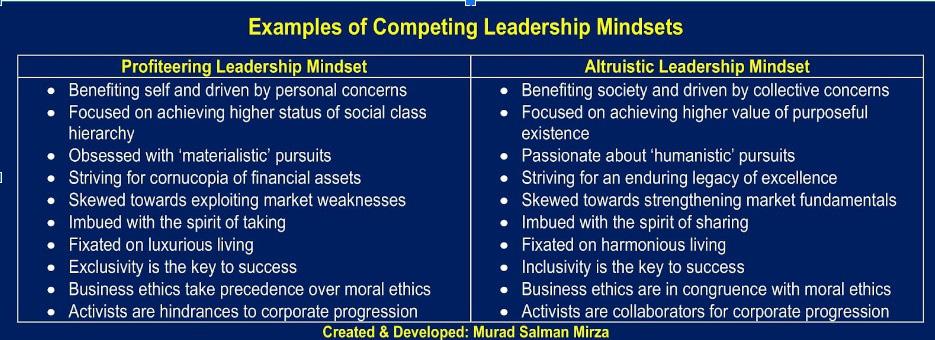
challenges can become an exercise in futility. This is especially true when employee expectations are not assessed proactively and effectively managed in a timely fashion as attested by the following results of a survey by McKinsey & Company:
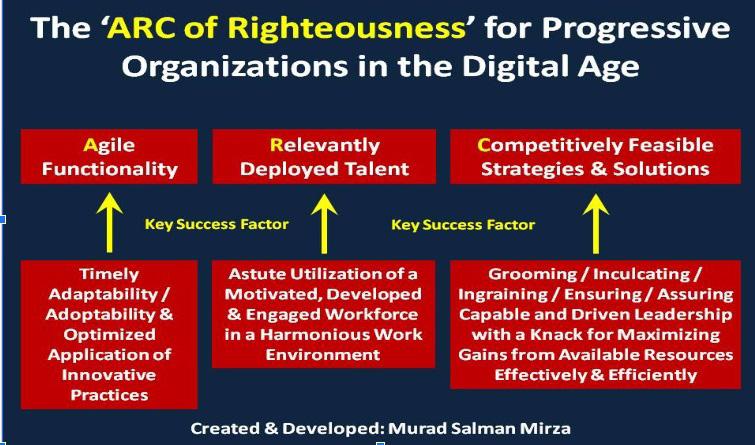
Submit Your Articles HCM Excellence (APAC & Middle East) presented by HR.com January 2023 28
Leveraging An Altruistic Mindset As A Competitive Advantage For Corporate Leaders
The Covid-19 pandemic was a catastrophic ‘wake-up’ call that jolted ‘complacent’ corporate leaders out of their ‘slumber’ (primarily induced by past achievements) as it invalidated all the ‘routine’ and ‘foreseeable’ risk-management plans while necessitating the imperative of rethinking ‘survival’, ‘relevance’ and ‘competitive’ strategies. Let’s explore some of the key lessons in the respective context:
People Increasingly Prefer Brands that are aligned with Their Values

The devastating impact of the Covid-19 pandemic forced people to assess the futility of chasing an
‘overbearing’ and ‘excessive’ lifestyle that largely focused on salivating over fancy and expensive brands in an incessant ‘craving’ for social acceptance within snobbish circles. Consequently, organizations are increasingly focusing their marketing initiatives on ‘Conscious Branding’ to preserve and increase their market share in congruence with changing consumer habits and trends. This is also galvanizing corporate leaders to build stronger ‘communal’ bridges that can act as a ‘buffer’ in future economic downturns, especially, those driven by unexpected events like the pandemic.
Submit Your Articles HCM Excellence (APAC & Middle East) presented by HR.com January 2023 29
Leveraging An Altruistic Mindset As A Competitive Advantage For Corporate Leaders
People are Unforgiving of Corporate Leaders, who Thrive on the misery of the masses
The words and actions of the corporate leaders came under intense scrutiny by the masses during the ‘turbulent times’ of the Covid-19 pandemic since there was a ‘humanistic’ desire to engage with companies that were willing to make ‘visible’ concessions in holding on to long-term customers/clients. This has led to a comprehensive rethink of how organizations need to be run and what it means to be a ‘justly capable’ leader. An important aspect in the respective context is the judgment of the consumers/clients in terms of gauging whether ‘exploitive’ leadership is an ‘abnormal’ situation or a ‘systemic’ issue that is liable to cripple an organization’s ability to meet their expectations.

People are Reducing Their ‘social’ networks and Increasing Their ‘Care’ Networks
There was a heightened sense of urgency during the worst ravages of the Covid-19 pandemic for people to find ‘true meaning’ in their lives as familial bonds were gradually strengthened while living under restrictive conditions. This was also important from a health and well-being perspective. Consequently, there has been a shift from ‘rampant extraversion’ to ‘preferred introversion’ in terms of reducing the ‘social crowds’ and increasing the ‘care crowds’ to extract more value from meaningful relationships. This is also being projected on the type of corporate leaders that people want to see at the helm of progressive organizations.
Submit Your Articles HCM Excellence (APAC & Middle East) presented by HR.com January 2023 30
Leveraging An Altruistic Mindset As A Competitive Advantage For Corporate Leaders
Unfortunately, Altruism is often seen either as a potential weakness in ‘compromising’ leaders or a clever marketing ploy by ‘conniving’ leaders to garner market share from ‘socially conscious’ customers/ clients, rather than, being hailed as a core strength of ‘conscientious’ leaders. The following ‘EMPOWER’ framework can be utilized in enabling corporate leaders to develop and deploy an Altruistic Mindset as one of the key enablers of Organizational Excellence in progressive organizations:
Empathize
Focused on extending care by internalizing the ‘pains/ problems/predicaments’ of others
Marginalize
Focused on sidelining apprehensions/fears/ misgivings by concentrating on the positives
Prioritize
Focused on an unbiased ranking of significant issues for systematic problem-solving
Open
Focused on accommodating constructive views/ opinions/suggestions/ideas from multiple sources
Win
Focused on developing win-win solutions that are readily embraced by key stakeholders

Employ
Focused on judicious and effective implementation of win-win solutions

Revitalize
Focused on timely and honest reviews that strengthen continuous improvement initiatives.
An organization’s definition of ‘Success’ needs to balance the conventional coveting of ‘Reward and Recognition’ with the enterprising munificence of inter-human connectivity based upon shared values. This can be readily modeled and driven by corporate leaders who are imbued with an Altruistic mindset. Such a proactive approach to ‘compassionate’ leadership is the best hope for organizations to survive the next ‘unexpected’ crisis as the strong psychological contracts affirmed during the ‘normal’ times with the workforce will work as a durable buffer in thwarting/alleviating/neutralizing any profound risks to the ‘going concern’ status of seemingly ‘secure’ organizations. Are you prepared accordingly?
Murad Salman Mirza is an innovative thinker and an astute practitioner of areas within and associated with the fields of organizational development, talent management and business transformation. He is globally ranked in 9 areas (HR, Leadership, Culture, Management, Agility, Innovation, Future of Work, Change Management, Customer Experience) by the world’s first open platform for Thought Leaders based in the USA that uses artificial intelligence (AI) for ranking to preclude human bias. He has worked in various geographical regions across the world.
Would you like to comment?
Submit Your Articles HCM Excellence (APAC & Middle East) presented by HR.com January 2023 31
Leveraging An Altruistic Mindset As A Competitive Advantage For Corporate Leaders
HRCI® & SHRM® CERTIFICATION PREP COURSES
GROUP RATES AVAILABLE
For HR Professionals
Show that management values the importance of the HR function, and has a commitment to development and improvement of HR staff.
Ensure that each person in your HR department has a standard and consistent understanding of policies, procedures, and regulations.
Place your HR team in a certification program as a rewarding team building achievement.
For Your Organization
Certified HR professionals help companies avoid risk by understanding compliance, laws, and regulations to properly manage your workforce.
HR Professionals lead employee engagement and development programs saving the company money through lower turnover and greater productivity and engagement.
A skilled HR professional can track important KPIs for the organization to make a major impact on strategic decisions and objectives, including: succession planning, staffing, and forecasting.
HR.com/prepcourse CALL TODAY TO FIND OUT MORE 1.877.472.6648 ext. 3 | sales@hr.com
1 Less expensive than a masters or PhD program, and very manageable to prepare with
2. legislation and best practices
3. Recognized, Industry benchmark, held by 500,000+ HR Professionals
Group Rate Options
We offer group rates for teams of 5+ or more for our regularly scheduled PHR/SPHR/ SHRM or aPHR courses.
For groups of 12+, we can design a more customized experience that meets your overall length of the course.
Groups rates for HRCI exams are also available as an add-on.
All group purchases come with 1 year of HR Prime membership for each attendee to gain the tools and updates needed to stay informed and compliant

CALL TODAY TO FIND OUT MORE 1.877.472.6648 ext. 3 | sales@hr.com | HR.com/prepcourse
1 2 3
How To streamline HR Operations With smart automation
automating employee onboarding to tracking employee performance
By Amit Shingala, Motadata
Asthe world is moving towards digital transformation, organizations must focus more on automation to make their organization witness faster growth and exceptional opportunities. Irrespective of any department, automation helps
conquer manual activities and provides faster outcomes with incredible results. From collecting personal information of candidates to onboarding program, automation can streamline the whole process for your organization.
Submit Your Articles HCM Excellence (APAC & Middle East) presented by HR.com January 2023 34
How To Streamline HR Operations With Smart Automation
The human resources (HR) department of your organization faces formidable challenges, and automation can help them overcome and seek incredible opportunities.
As your business grows, you need to find ways to automate specific tasks to free up your HR team to focus on important strategic initiatives. Not only your HR department, but the whole automation process will bring more satisfied employees into your organization.
In this article, we will share some best practices for HR automation so that you can get started streamlining your processes.
What Is HR automation?
HR automation is the process of automating HR processes and tasks. This can include everything from automating employee onboarding to tracking employee performance. By automating HR processes, businesses can save time and money, and improve efficiency. Apart from business operations, HR automation will also drastically improve the overall

work environment and enhance the company culture of your organization.
In addition, by integrating HR automation tools, organizations can witness better collaboration between employees, which will ultimately enhance the productivity and performance of the organization.
Here are some daily HR processes that can be automated:
1. Automating employee onboarding: Most modern ITSM tools come with predefined workflows and templates to automate the most systematic process in HR, which is onboarding.
2. Tracking employee performance: Build channels to receive feedback from managers and automate tasks related to report generation.
3. Managing employee records: Build a service catalog, a prominent feature in most ITSM tools, where you can host all HR-related services.
Submit Your Articles HCM Excellence (APAC & Middle East) presented by HR.com January 2023 35
4. Generating payroll reports: Build workflows to create and distribute payroll reports and eliminate human intervention.
5. Creating and managing employee schedules: Leverage a dashboard to make data easily accessible.
Integrating automation into your HR operations will constantly add more value to your organization and provide you with incredible results in the long run. According to a research, around 58% of businesses have witnessed improvements in employee retention by adopting enterprise service management in the HR department to streamline HR operations.
What are the Benefits of HR automation?
The benefits of HR automation are many and varied. By automating HR processes, organizations can improve efficiency and accuracy, reduce costs, and improve compliance with regulations.
In addition, automating HR can help free up HR staff to focus on more strategic tasks.
Some additional benefits of HR automation include the following:
1. Improved efficiency and accuracy in HR processes
2. Reduced costs associated with HR processes
3. Increased compliance with government regulations
4. Improved ability to attract and retain top talent
5. Better alignment of HR strategies with business goals
6. More effective management of employee data
7. Greater insight into the workforce through data analytics
8. Enhanced decision-making capabilities through data-driven insights
9. Increased employee satisfaction and engagement
How to automate HR processes?
If you are wondering how to begin automating your HR processes, here are some best practices to follow:
Define your goals and objectives
Here is a list of questions that you need to answer to decide the goals and objectives; the questions are:
● What are you hoping to achieve by automating your HR processes?
● How will it be beneficial for the organization?
● What are the long-term outcomes?
If you know the answer to these questions, you can easily set goals for the HR department, and integrating the right HR automation tool will help you achieve those goals.
Streamline your data
Before automating anything, you must ensure that your data is clean and organized. This will make it much easier to add it into your automation system and help ensure accuracy. In addition, organizing data efficiently will help you implement automation proficiently, ultimately reducing your burden and making the process smooth and easy.
Select the right tools
The market is flooded with exceptional HR automation tools, and it is hard for you to select the right tool. But you can do some research online and match the features you want, and if it fits your requirement, can move forward. Ensure that you choose the best HR automation tool that fulfills all your requirements and fits your budget to get the most satisfying outcomes.
Train your employees
Once your HR automation system is up and running, train your employees in proper usage. For example, they should know how to enter data, run reports, etc. In addition, your team needs to understand how automation works; otherwise, it will be useless. There are a lot of things that you need to teach your employees, and proper HR automation training will solve the problem.
Monitor and adjust as needed
Be sure to monitor your HR automation system after it has been implemented. You may need to adjust along the way to ensure that it is working as efficiently
Submit Your Articles HCM Excellence (APAC & Middle East) presented by HR.com January 2023 36
How To Streamline HR Operations With Smart Automation
as possible. Finally, implement it according to your business requirements. Every organization is different, and this is the benefit of automation that you can customize according to your need.
Best Practices to streamline HR automation
Streamlining the onboarding process
Regarding automating employee onboarding, there are essential best practices to keep in mind:
1. The goal is to make it as easy as possible for new hires to get started with their new roles.
2. Automate critical tasks, such as sending welcome emails and orienting new hires with company policies.
3. Be sure to track the progress of each new hire so you can identify any areas that need improvement.
Introducing automation for Better decision making
Analyzing and inspecting the data for better decisionmaking in any organization is crucial. The same thumb rule applies to the HR team members. With professional HR automation tools, one can efficiently analyze the accurate HR data aspects, which include headcount, employee data, compensation, and salary trends, to obtain the best decision-making strategies. As a result, HR automation will give you peace of mind and help you focus on other vital tasks for better employee efficiency.
Cost-Effectiveness
The upfront cost of the HR automation tools sounds unacceptable to most organizations, which is quite apparent when the budget is tight. But when you consider the long-term benefits of this fantastic tool, it is a cost-effective deal. If you think of it as a long-term investment, then the HR automation tool will do wonders for your organization.
make Your Organization more Resilient
With the help of the HR automation tool, you can easily create backups of data, processes, and other information, making you less dependent on your
employees. So, make your organization resilient by integrating the HR automation tool.
Conclusion
Automation is a necessity for all organizations. Whether it be productivity, cost-saving, or delivering faster results, intelligent automation helps your organization to push its capabilities and achieve out-of-the-box results.
In this highly competitive world, you need every possible tool that helps enhance your business efficiency and defeat the competitor, which is intelligent automation.
Automating HR processes can save your company time and money. By following the best practices outlined in this article, you can ensure that your HR automation efforts are successful. Of course, implementing an automated system is not a one-time task – it requires ongoing maintenance and support from IT and HR. But by working together, you can streamline your HR processes and improve your company’s bottom line.
So, integrate HR automation today and convert the HR team challenges into opportunities and head your business toward the path of growth and stability.
Amit Shingala is the Co-Founder & CEO of Motadata (Mindarray Systems Pvt. Ltd). He holds over 13+ years of experience in building, scaling and selling enterprise products to solve complex problems of cross-monitoring by gathering meaningful insights from a hybrid infrastructure by leveraging data ingestion from heterogeneous sources and MLcapabilities.
Would you like to comment?

Submit Your Articles HCM Excellence (APAC & Middle East) presented by HR.com January 2023 37
How To Streamline HR Operations With Smart Automation
PARTNER WITH US
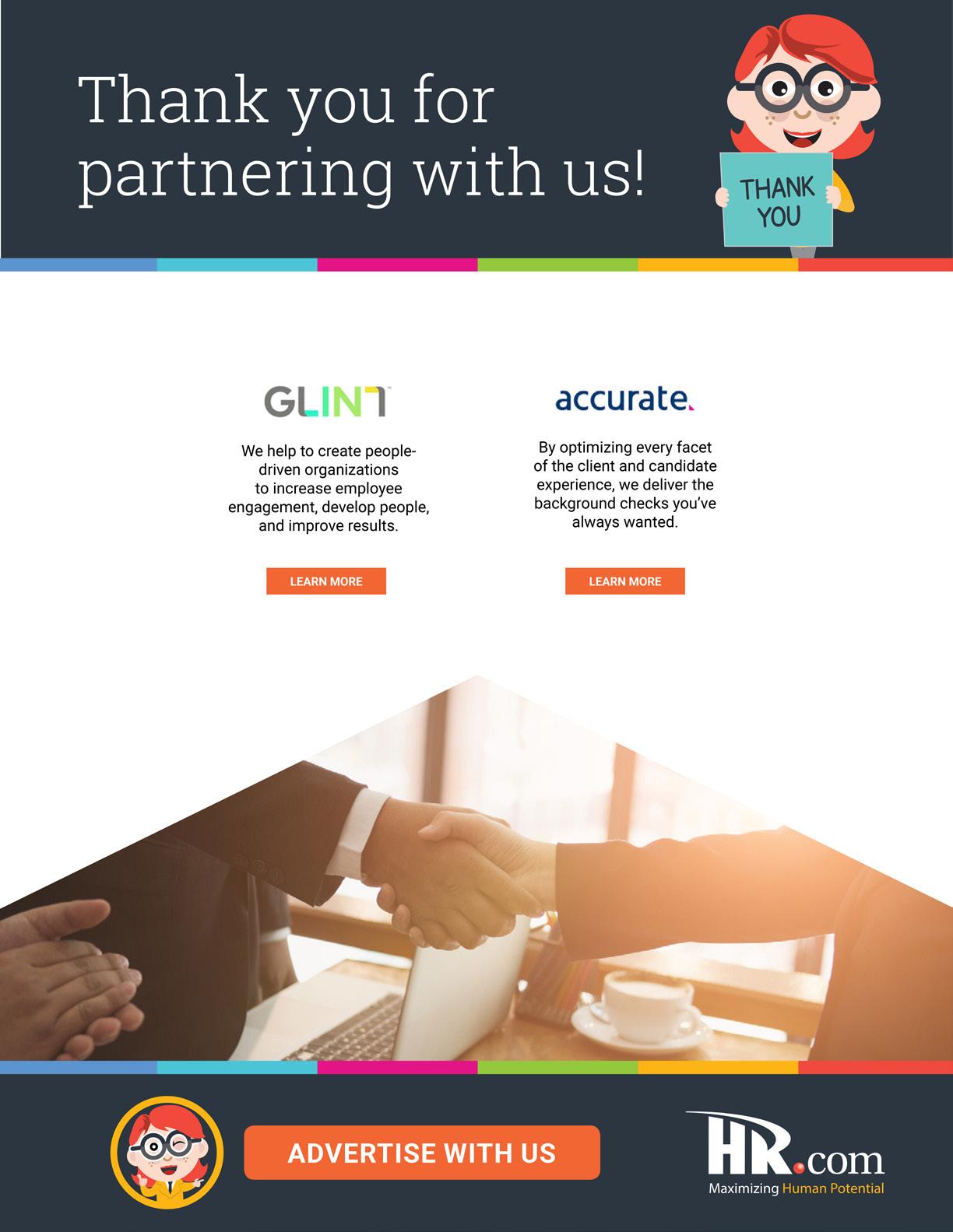
The State of Human Experience in the Workplace
February 15-16, 2023
The Future of Upskilling and Employee Learning
View our Upcoming Virtual Conference Schedule and Register Today!
February 22, 2023
HR’s Best-Kept Secret: Contingent Workers Are the Key to a Resilient Workforce
February 7, 2023 11:00 AM - 12:00 PM ET
February 8, 2023
Engage, Connect, Inspire Your Teams: a Roadmap for Leaders
Living Our Values Every Day - How Leading Companies Build Cultures of Employee Appreciation
Elevating the Employee Experience in 2023: Why Engagement, Wellbeing, and Culture Are Key
AM - 12:00 PM ET
February 14, 2023
February 15, 2023
View our Upcoming Webcasts Schedule and Register Today!
www.hr.com/upcoming_webcasts
REGIsTER
REGIsTER
REGIsTER
REGIsTER VIRTUaL EVEnTs & HR.COm WEBCasTs UPCOmInG
www.hr.com/virtualconferences
11:00
WEBC as T s
REGIsTER
2:00 PM - 3:00 PM ET
1:00
2:00
REGIsTER WEBC as T s VIRTU a L EVE n T s
PM -
PM ET

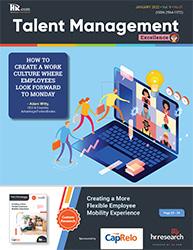
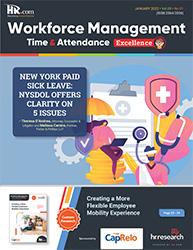




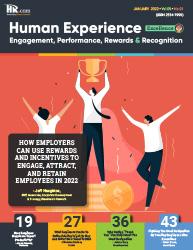





Like to submit an article? Use our online submission form or for more information go to www.hr.com/ExcellencePublications Publications 13 Targeted Publications to Reach Your audience Informing, Educating, Enlightening and Assisting HR professionals in their personal and professional development, the Excellence series offers high-quality content through the publications!































 Dave Ulrich
Rensis Likert Professor, Ross School of Business, University of Michigan Partner, The RBL Group
Julie Winkle Giulioni Author, Virtual /Live Keynote Presenter, Inc.’s Top 100 Leadership Speakers
Dr. Beverly Kaye CEO, BevKaye&Co.
Dave Ulrich
Rensis Likert Professor, Ross School of Business, University of Michigan Partner, The RBL Group
Julie Winkle Giulioni Author, Virtual /Live Keynote Presenter, Inc.’s Top 100 Leadership Speakers
Dr. Beverly Kaye CEO, BevKaye&Co.


 By Uzair Hassan, 3H Solutions Group
By Uzair Hassan, 3H Solutions Group














































